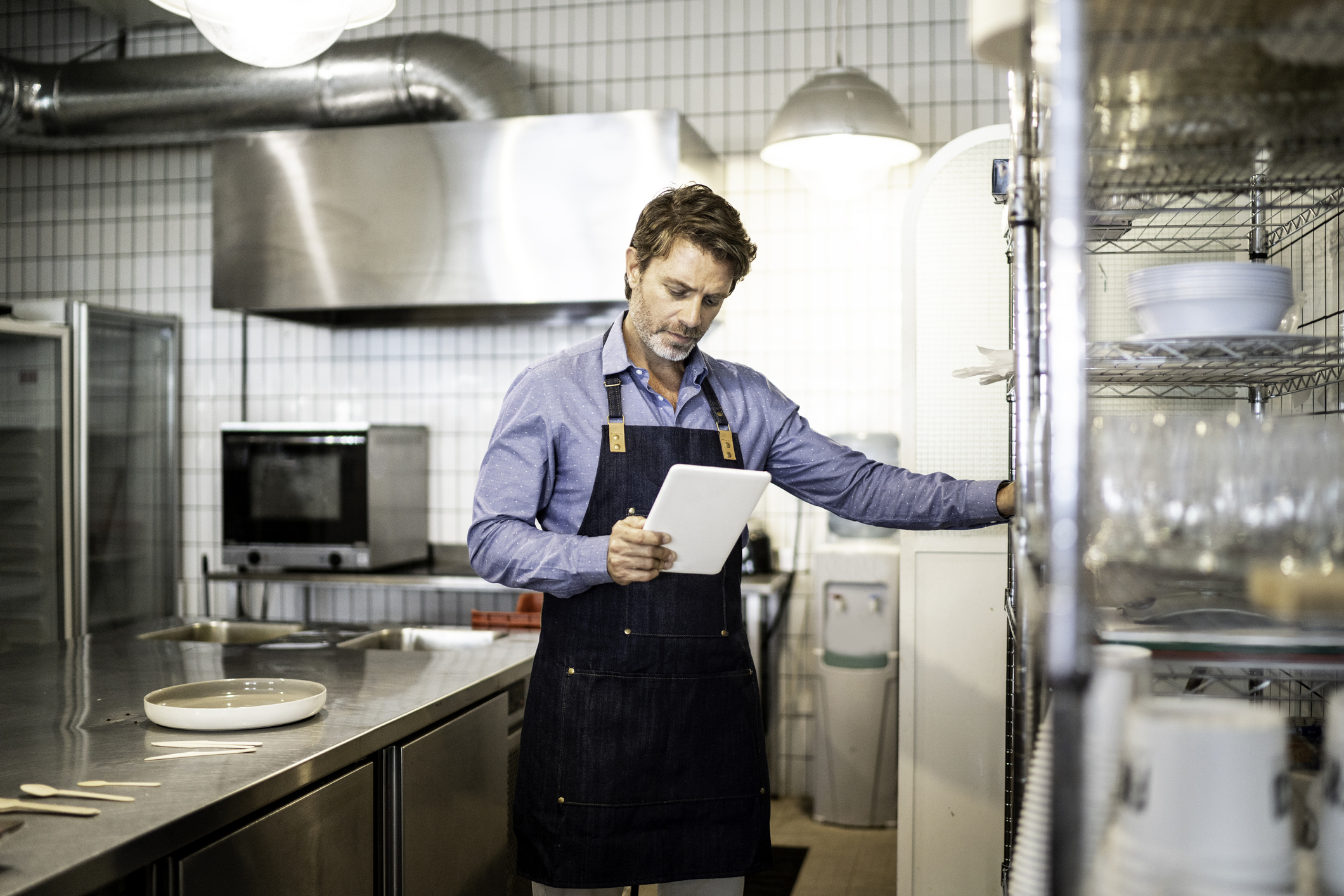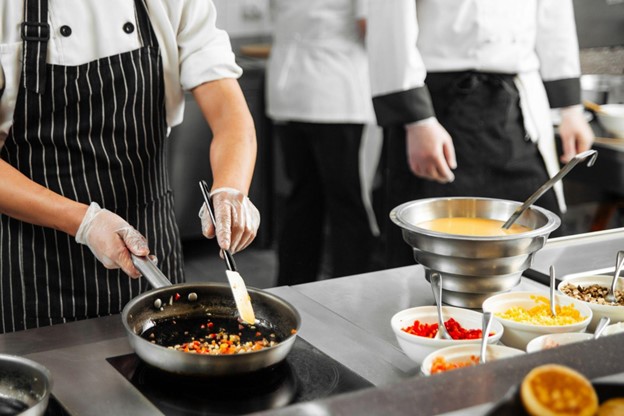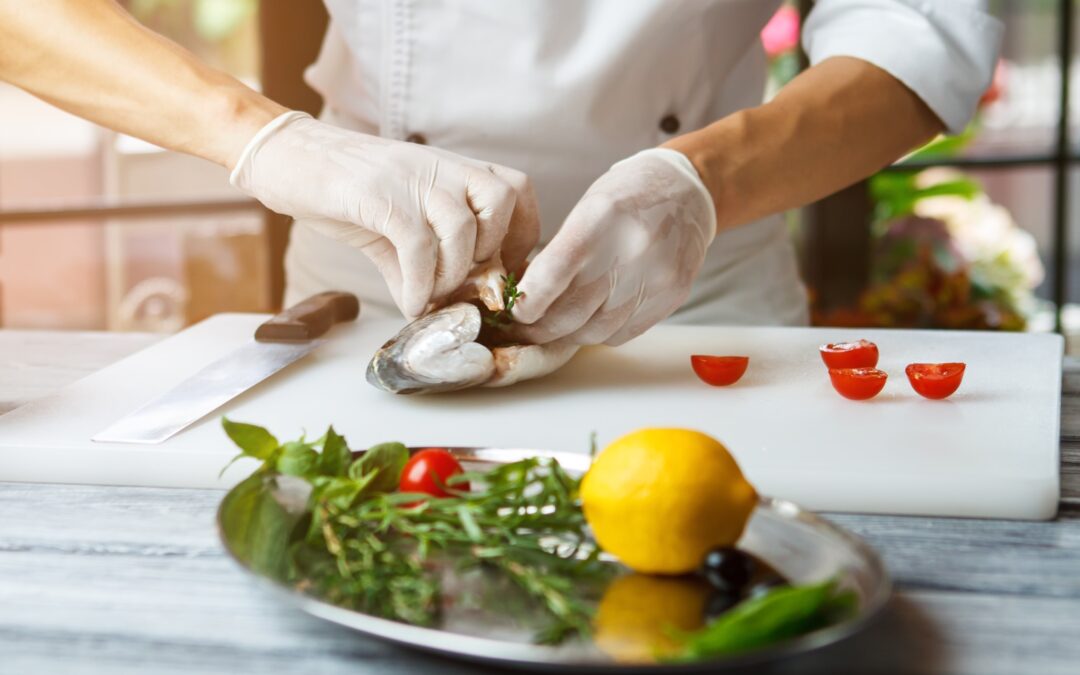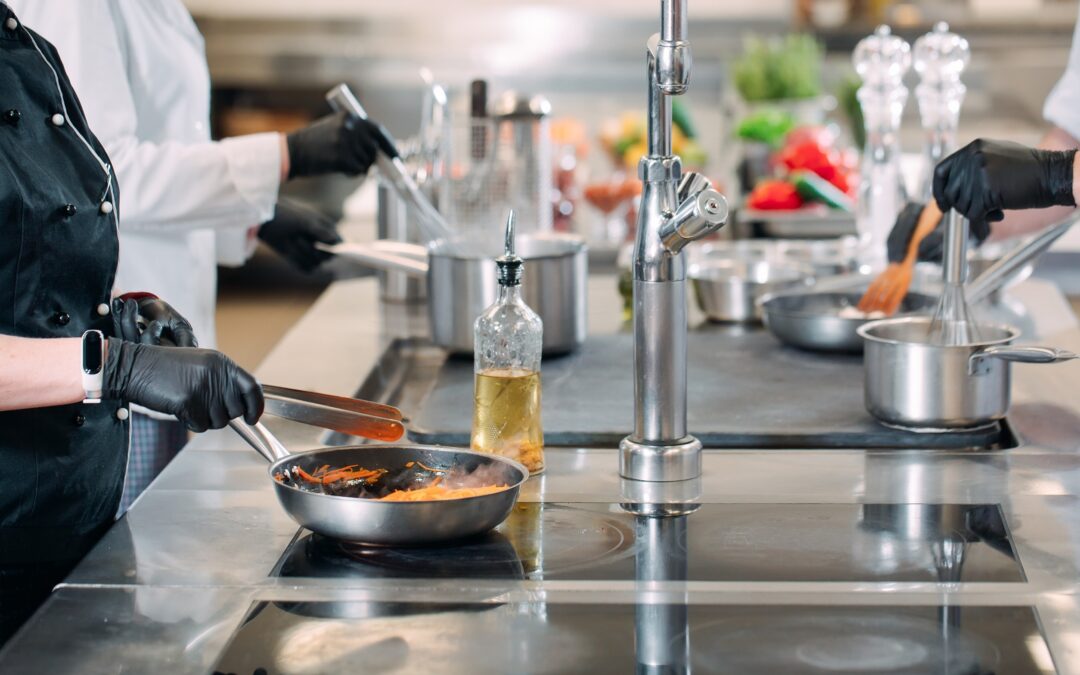Food safety with your employees, students, and teachers in the school cafeteria is an important aspect of your health and safety. ServSafe can train your cafeteria workers, cooks, and managers to manage food safety when preparing meals for students, teachers, and other staff. Did you know that more than 200 diseases are spread through food? We will discuss cleaning, cross-contamination, refrigerating, cooking, and storing food properly.
Cleaning As Part of Food Safety
Employees should wash their hands often and wear gloves when handling food. There should be two cutting boards for cutting fruit and vegetables and another one for meats and poultry. Cutting boards should be washed and sanitized after use and dried completely. Counters and tables where food is managed should be cleaned regularly and sanitized by the food service staff. Those that prepare food should wear hair nets to keep hair out of the food. Daily cleaning of equipment, utensils, cutting boards, plates, cups, glasses is recommended and using a dishwasher. A ServSafe Course will teach your staff the right methods for cleaning and safety.
Avoid Cross-Contamination When Handling Meat, Poultry or Fish
Meat, poultry, and fish should be handled separately from each other and other foods, fruits, and vegetables. Cut meat on a cutting board and store it in plastic bags in the refrigerator or freezer to keep the juices from leaking. Store meats and poultry on separate shelves from vegetables and other food products in the refrigerator. Most meat, poultry, and fish can be frozen in Ziplock bags or containers unless used at once.
Always wash the cutting board after handling these products. Wash your hands before handling other foods. All meats, eggs, poultry, should be refrigerated within two hours or less. Do not thaw food on the counter. Better methods are in the refrigerator or microwave. Most food can be frozen for about three to 12 months without worrying about spoilage.
Learn to Cook Foods Properly
A thermometer is a valuable tool in the kitchen when cooking meats, poultry, fish, and hot foods. It can measure the temperature and let you know if the food is safe to serve. Not cooking food enough can lead to food-borne illness. Cold food left out on the table can grow bacteria when not refrigerated properly. Dishes with eggs, mayonnaise, milk, and cream should be refrigerated. Just leave out for 1/2 hour left to one hour. Keeping hot food hot and cold food prevents foodborne illness. Fruits and vegetables should be washed before use in food preparation. Your employees should learn the right temperature to cook meats, poultry, fish, and hot foods for safe consumption.
Overall, ServSafe courses will train your food service staff in all aspects of food safety so you can have a good year for food safety all year long.




